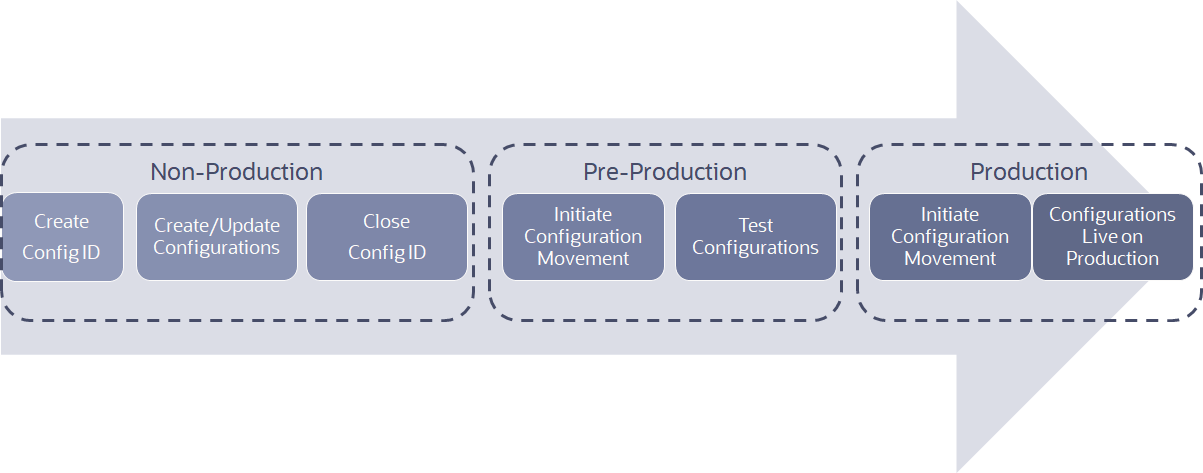4 Understanding Configuration Lifecycle
Most of the configuration changes in Oracle Financial Services Cloud require testing before making them available for customers to start using. To facilitate this, all configurations in Oracle Financial Services Cloud are first created in the Non-Production tenancy and are then moved to Pre-Production tenancy for isolation testing, from where they are finally moved to Production tenancy where the users can start using the configurations. Movement of configurations from one tenancy to other is using the Configuration Movement process.
All configurations in Oracle Financial Services Cloud are configured under a Config Id in Non-Production. The Config ID tracks the configuration lifecycle of an entity and facilitates the movement of configurations across the three tenancies. Thus, it is imperative that all configurations pertaining to an entity are bundled under the same Config ID, thereby simplifying the Configuration Movement process.
Figure 4-1 Lifecycle of Configurations in Oracle Financial Services Cloud

Stages in Configuration Lifecycle
- Configuration Lifecycle starts with the creation of a Config ID in Non-Production tenancy. The Config ID essentially wraps your configurations together, making it convenient to move across tenancies.
- Once you create a Config ID (or select an already existing Config ID), you can go ahead and start creating configurations in Non-Production.
- After creating and testing your configurations, close the Config ID in Non-Production, thereby freezing the configuration changes.
- Initiate the movement of configuration from Non-Production to Pre-Production using Configuration Movement process, initiated from the target tenancy; in this case, Pre-Production.
- Continue testing the configurations in Pre-Production, but note that you cannot make any configuration changes at this point.
- Once you are satisfied with your isolation testing in Pre-Production, initiate the Configuration Movement from Pre-Production to Production.
- Once the Configuration Movement process completes successfully, your configurations are available at the Production tenancy.